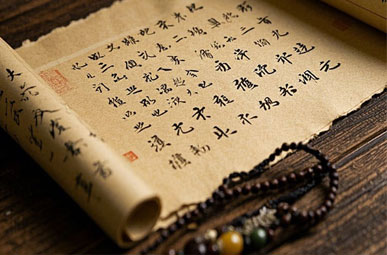China has three mountains with confusingly similar names: Langya Mountain in Anhui, Langya Mountain in Shandong, and Langya Mountain in Hebei. Though their Chinese pronunciations are nearly identical (琅琊山 vs. 狼牙山), they’re entirely different destinations. One is a poet’s paradise with ancient pavilion, another has coastal views linked to China’s first emperor, while the third is a WWII hero’s rugged memorial. Learn which mountain matches your travel style – history, beaches, or hiking – and avoid booking the wrong tickets!

I. Geographic location: different distribution in the north and south
Anhui Langya Mountain
Located in the southwestern suburb of Chuzhou City, Anhui Province, only 60 kilometers away from Nanjing, Anhui Langya Mountain is a famous hilly landscape in the middle and lower reaches of the Yangtze River Plain. Its core scenic area of about 115 square kilometers, the highest peak elevation of 317 meters.

Geographic coordinates: latitude 32°15′ north, longitude 118°18′ east.
Shandong Langyatai
Shandong Langya Mountain is located in Huangdao District, Qingdao City, Shandong Province (formerly Jiaonan City), located in the southern tip of the Jiaodong Peninsula, surrounded by the sea on three sides, the main peak elevation of 183 meters.

Geographic coordinates: latitude 35°56’N, longitude 120°10’E. The mountain is located at the southern end of the Jiaodong Peninsula.
Hebei Langya Mountain
Hebei Langya Mountain is located in Yixian County, Baoding City, Hebei Province, at the eastern foot of the Taihang Mountains, about 150 kilometers from Beijing. The main peak is 1105 meters above sea level, known for its steepness.

Geographic coordinates: 39°10’N latitude, 115°20’E longitude.
II. The origin of the name: historical references
Langya Mountain, Anhui: the Sima family of the Eastern Jin Dynasty and the “Langya” fiefdom
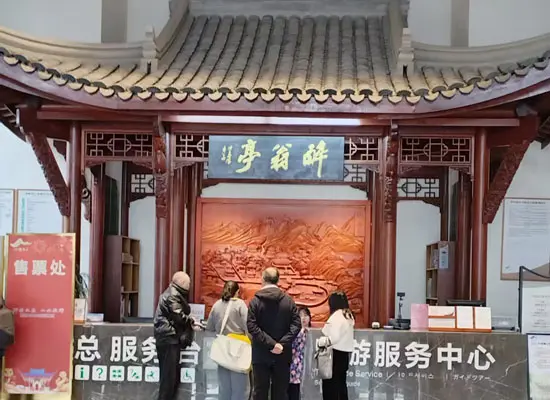
The name “Langya” originated in the Eastern Jin Dynasty. The Sima family was once the “King of Langya”, and then moved south to Chuzhou, naming the mountain Langya Mountain. Ouyang Xiu “Drunken Master Pavilion Records” in the “around the Chu are also mountains” refers to this mountain.
Langyatai, Shandong: Qin Shi Huang’s east tour and the ancient Langya County
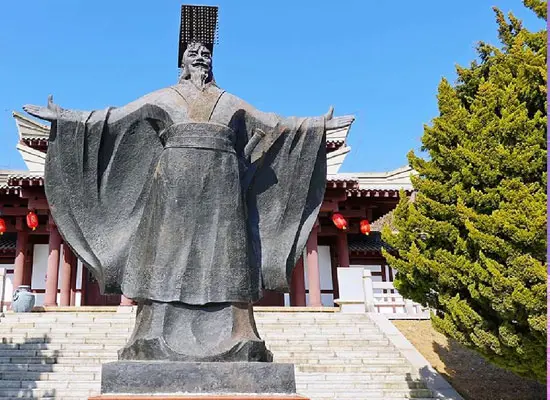
Langya Mountain, Shandong, was named after the Qin Dynasty “Langya County”, Qin Shi Huang had climbed the mountain three times and carved a stone to record his achievements. It is also the cultural symbol of Zhuge Liang’s hometown (ancient Langya Yangdu County).
Langya Mountain, Hebei: the peak looks like a wolf’s tooth
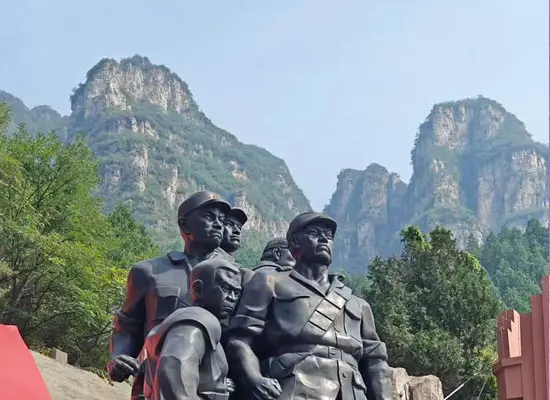
Langya Mountain in Hebei is named after its steep peak, which looks like a wolf’s tooth, a different word from “Langya”. Its name is closer to the natural form, rather than the historical seal.
III.History and Culture: From Literary Masterpieces to Red Memories
Langya Mountain, Anhui: A Poetic Habitat for Literati in the Tang and Song Dynasties

- Ouyang Xiu wrote “The Story of the Drunken Weng Pavilion” when he was the governor of Chuzhou, making it a famous literary mountain.
- In the scenic area retains the Song Dynasty Langya Temple, Tang Dynasty Wu Daozi Guanyin stone carving and other monuments.
Langyatai, Shandong: Cultural Symbols of Emperors and Generals
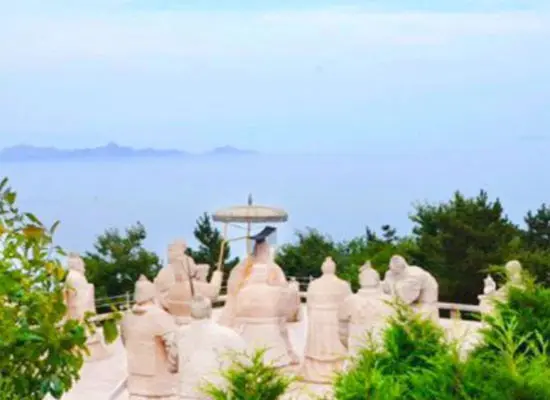
- Emperor Qin Shi Huang built the Langya Terrace here, and sent Xu Fu east to seek immortality.
- Zhuge Liang’s family used to live in the ancient Langya County, and at the foot of the mountain, there is a memorial hall of “Zhuge’s hometown”.
Langya Mountain, Hebei: Monument to the Heroes of the Resistance
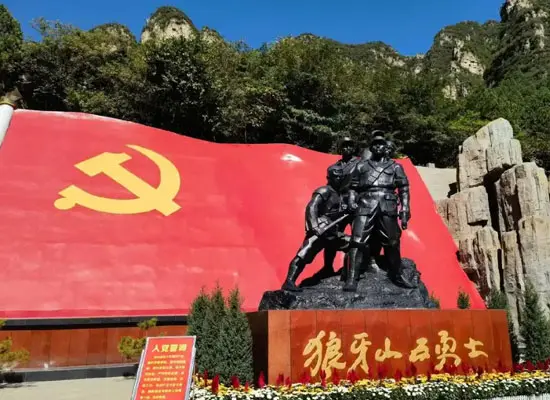
- In 1941, the deeds of the “Five Heroes of Langya Mountain” became famous throughout the country, and it is now a national patriotic education base.
- Combination of red tourism and natural landscapes, built a memorial tower of the Five Heroes.
IV.the natural landscape and tourism characteristics
Anhui Langya Mountain: the fusion of Jiangnan garden and mountain forest

- Core attractions: Drunken Weng Pavilion, Langya Mountain Temple, Shamxiu Lake.
- Suitable for people: literature lovers, parents and children study tour.
- Best Season: Spring (mountain flowers), Autumn (forest).
Langyatai, Shandong: The Secret Land of Mountains and Seas

- Core attractions: Langya Mountain Ruins, Longwan Beach.
- Suitable for people: historical examiners, seaside vacation tourists.
- The best season: summer (summer vacation), fall (seafood harvest).
Langya Mountain, Hebei: Dangerous Peaks and Red Memory
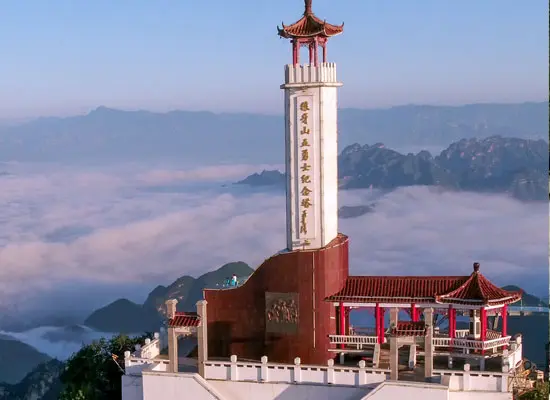
- Core Attractions: Where the Five Strong Men Jumped Off the Cliff, Glass Viewing Platform.
- Suitable for people: mountaineering enthusiasts, red tourism groups.
- The best season: fall (red leaves), winter (snow).
V. Common Confusion and Recognition Techniques
Name Writing Differences
- “Langya(琅琊)” is written the same way in Anhui and Shandong, and “Wolf’s Tooth(狼牙)” in Hebei.
- The name should be entered accurately in search engines to avoid confusion.
Geographical relevance
Langya Mountain in Anhui is associated with the Chuzhou and Nanjing metropolitan area; Langya Mountain in Shandong is part of the Qingdao tourism line; and Langya Mountain in Hebei is close to the Beijing-Tianjin tourism belt.
Tourism theme differentiation
cultural trip to Anhui, historical exploration in Shandong, red education in Hebei.
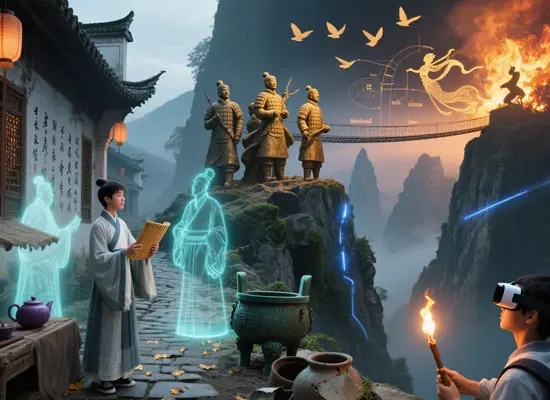
VI. Conclusion: accurate positioning, enhance the travel experience
Although the name of Anhui Langya Mountain, Shandong Langya Mountain and Hebei Wolf Tooth Mountain are similar, but the geography, history and tourism functions are significantly different. Through the comparison of this article, tourists can quickly lock target:
- Prefer classical literature? Langya Mountain in Anhui is the first choice.
- Passionate about the history of the Qin and Han Dynasties? Langya Mountain in Shandong Province is not to be missed.
- Aspire to the red spirit? The Wolf Tooth Mountain in Hebei is worth a pilgrimage.


